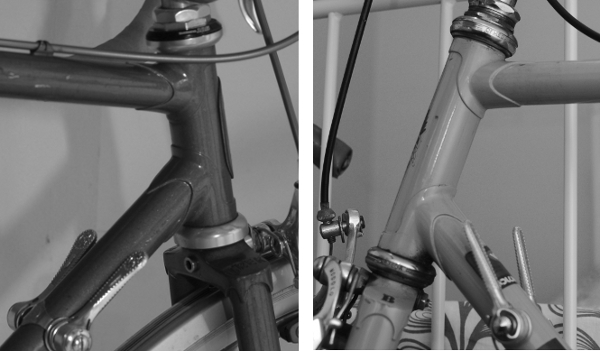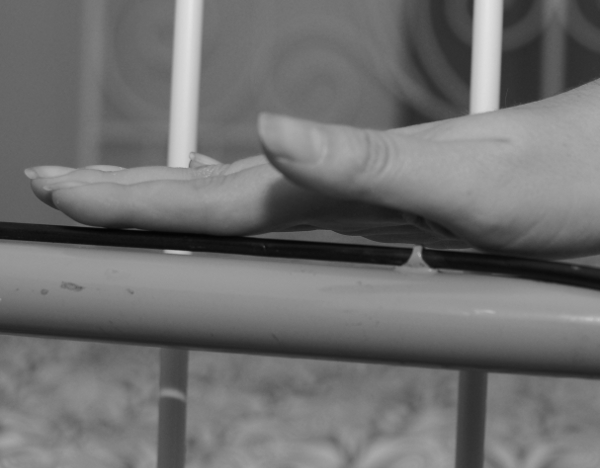
"Ratings can be all over the map on this one, WI 5R, M5, 3 to 5 pitches can be had, or it can be WI6-R and no M rating or if you are lucky casual WI4 and no rock. It is a water ice climb in an alpine environment so it is all about conditions. Today they were good."
A few years ago a buddy of mine was telling me how his ridiculously hard first ascent of a mixed alpine line, had now been down graded, without ever have been repeated. Part of it he blamed on the French. Part of the discussion, and his real point, I failed to fully understand at the time.
The French climbers who had recently repeated the route, did so in conditions the first ascent party only dreamed of. The Anglo/Saxon team had hard mixed, dry tooling, little pro and less ice. The French had neve' inches thick and yards wide, a tiny bit of mixed in comparison and climbed the majority of the same line as a pure ice climb with single swing, bomber sticks.
The two teams on the same stellar line obviously did not have the "same" experience.
So my friend was right. "His" climb has yet to be repeated. But that has always been the nature of alpine climbing and even more so with the most modern alpine mixed routes.
Before modern ice gear, the greatest alpine ice routes were generally only climbed when they were perfect snow or neve'. Anything that showed bare ice was considered too dry and out of condition. Now we search out those dry "real ice" conditions and quickly front point through easy alpine neve'.
Ice runnels that offer stellar M climbs are there and climbable one day and gone the next in the Cascades or Alps. Good example was a line I climbed last winter following a party from the previous day. Then two days later that runnel was bare rock and the ice gone. Subsequent parties that winter by passed the crux (because it simply was no longer there) of "our" route by climbing easy snow well right of our original line. Discussion of the route between a dozen of us who had been there left us wondering just what "climb" we were actually on?! M5 or easy snow? You wouldn't think that would be much a discussion. But it took pictures taken during "our" climbs actually showing "our" conditions to sort it all out.
What have learned from all this? Climb when you can, enjoy what the conditions are while you are there and then forget about it :-)

The two pictures are the same climb almost exactly a year to date ('09/'10) separated in time. The pitch you are looking up in both pictures is a over-hanging rock corner, and typically fills in with ice formed from melt water coming down from high on the peak. Enough ice generally to climb as a WI5 to WI6- with an R rating. How over-hanging the climbing is depends on how much ice has formed. It can build enough ice to be a WI4- route. The initial quote at the beginning of this blog and the photos are from the classic Cascade ice route on Snoqualmie Pass, "Flow Reversal".

My peference for any WI6R route? Wait till it is FAT!
Late spring WI4 condition.
And another photo of the same line a few years previous. Roger Strong photo

 The picture is not dated. Amanda was born on September 25, 1860 and was the first of four children of William and Rachel (Van Curen) Alexander. Amanda was married to Samuel Bray Wiseman on June 7, 1883 (her sister Laura married Sam's brother Henry).
The picture is not dated. Amanda was born on September 25, 1860 and was the first of four children of William and Rachel (Van Curen) Alexander. Amanda was married to Samuel Bray Wiseman on June 7, 1883 (her sister Laura married Sam's brother Henry).

 In the comments of recent posts there has been some interesting discussion about spending money on bicycles and accessories. I am not going to delve into some of the more existential issues raised, but one theme I found funny was the difference in our willingness to spend money on bikes versus accessories. Some are willing to spend a hefty sum on a bicycle, but don't really go for fancy components or accessories beyond the basics. Others would never spend more than several hundred dollars on a bike, but are perfectly happy to pay for component upgrades and fancy luggage.
In the comments of recent posts there has been some interesting discussion about spending money on bicycles and accessories. I am not going to delve into some of the more existential issues raised, but one theme I found funny was the difference in our willingness to spend money on bikes versus accessories. Some are willing to spend a hefty sum on a bicycle, but don't really go for fancy components or accessories beyond the basics. Others would never spend more than several hundred dollars on a bike, but are perfectly happy to pay for component upgrades and fancy luggage. 


 My favorite color may well be yellow. I try to tell myself that it is a
My favorite color may well be yellow. I try to tell myself that it is a 


 Ahhhhhh, Spring. Thank you for returning. I was worried you had abandoned us.
Ahhhhhh, Spring. Thank you for returning. I was worried you had abandoned us.



 Peaceful skiing up the road
Peaceful skiing up the road Snowing hard
Snowing hard Snow fly?
Snow fly?

 Mono Lake near the town of Lee Vining in east-central California.October 11, ..
Mono Lake near the town of Lee Vining in east-central California.October 11, ..


 I have come into the possession of a roadbike that was described by the previous owner as a 52cm frame, but in fact measures 54.5cm. On a diamond frame, that can be a significant difference, and I am trying to determine- without giving in to wishful thinking -whether the bike is too big for me to ride safely. When it comes to step-through bicycles, I prefer to ride the largest frame possible, as long as I am able to hoist myself onto the saddle. My Gazelle is 57cm, myRaleigh DL-1 is 56cm, and my Bella Ciao is 54cm. But with a diamond frame, that approach is not possible, because top tube clearance is an additional factor to consider. That is why my roadbikes have 52cm frames.
I have come into the possession of a roadbike that was described by the previous owner as a 52cm frame, but in fact measures 54.5cm. On a diamond frame, that can be a significant difference, and I am trying to determine- without giving in to wishful thinking -whether the bike is too big for me to ride safely. When it comes to step-through bicycles, I prefer to ride the largest frame possible, as long as I am able to hoist myself onto the saddle. My Gazelle is 57cm, myRaleigh DL-1 is 56cm, and my Bella Ciao is 54cm. But with a diamond frame, that approach is not possible, because top tube clearance is an additional factor to consider. That is why my roadbikes have 52cm frames. To illustrate what a difference just over 2cm can make, here is the new fosterbike (right), face to face with one of my 52cm roadbikes(left). The perspective of the shots exaggerates the larger bike, but look at the space between the lugs on the head tubes to get a more accurate sense of the difference. It is considerable.
To illustrate what a difference just over 2cm can make, here is the new fosterbike (right), face to face with one of my 52cm roadbikes(left). The perspective of the shots exaggerates the larger bike, but look at the space between the lugs on the head tubes to get a more accurate sense of the difference. It is considerable. The bike is not in rideable condition, so I can't try it out. But standing over the top tube inmy bare feet, there is less than 1mm of clearance between my"soft tissue" and that black cable.
The bike is not in rideable condition, so I can't try it out. But standing over the top tube inmy bare feet, there is less than 1mm of clearance between my"soft tissue" and that black cable. In the shoes I usually wear, the space underneath my forefinger illustrates the clearance I get - less than 1/2". The bike needs a lot of work and some component replacements, before I can actually ride it and determine for sure whether I am okay with so little clearance. And naturally, I am reluctant to do that work if in the end I won't be able to ride it. My main worry, is that when dismounting I might hit my pelvis on the top tube, since our knees tend to bend a little when we jump. But I am not sure whether in actuality that is a valid concern.
In the shoes I usually wear, the space underneath my forefinger illustrates the clearance I get - less than 1/2". The bike needs a lot of work and some component replacements, before I can actually ride it and determine for sure whether I am okay with so little clearance. And naturally, I am reluctant to do that work if in the end I won't be able to ride it. My main worry, is that when dismounting I might hit my pelvis on the top tube, since our knees tend to bend a little when we jump. But I am not sure whether in actuality that is a valid concern.
















 Bob, Sandy, John, Gary, and Smitty. This photo was taken in December 1973, just a few weeks before I left Reykjavik, Iceland. It's really hard to believe that it was 35 years ago! My one-year tour of duty in Iceland was made much more pleasant because of their presence.
Bob, Sandy, John, Gary, and Smitty. This photo was taken in December 1973, just a few weeks before I left Reykjavik, Iceland. It's really hard to believe that it was 35 years ago! My one-year tour of duty in Iceland was made much more pleasant because of their presence.